How They Wish To Be Left Alone
Jarburg, and how Elden Ring offers tranquility among violence and death
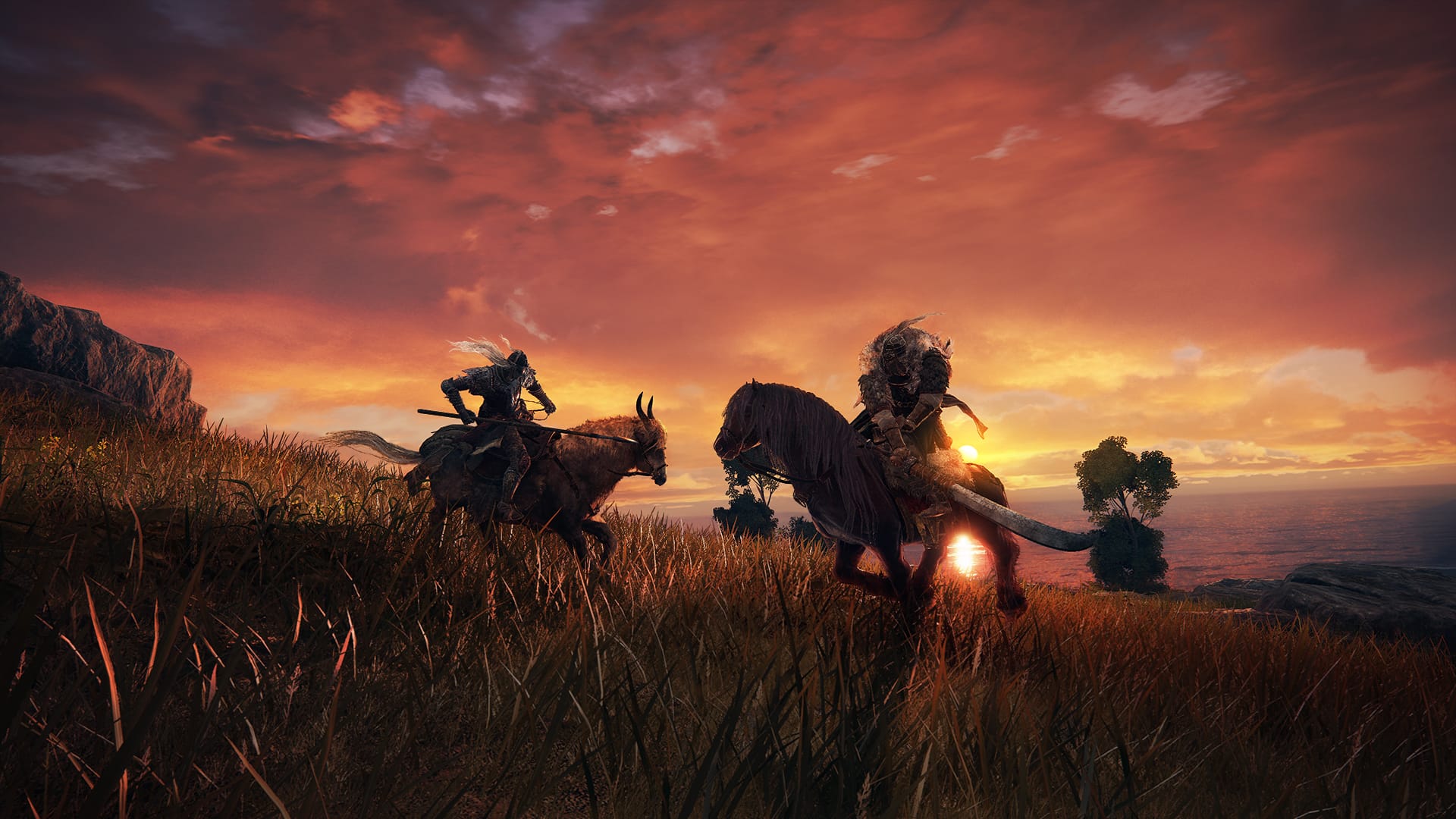
"I often passed the village when going home from school, and wondered what they did there, and why it was so still."
Emily Dickinson
In my first playthrough of Elden Ring, I missed Jarburg completely. It's an easy location to miss. Tucked into the cliffside of Liurnia, hidden by the shadow of the Carian Study Hall, it's not a location that harbors a boss or Great Rune or impressive weapon. It's a lonely village inhabited by individuals who are enemies elsewhere. It's quiet, forlorn, and purposefully out of the way.
Like many instances and secrets within Elden Ring, I found out about Jarburg from the internet. To think that I had accidentally missed something so precious, so profound, well it wounded me. While carefully navigating Torrent down the cliffside, I came to find a small hamlet of colorful flowers and decrepit old shacks. Populated by Living Jars, Jarburg's purpose is immediate: it is a respite from the world, populated by creatures who no longer wish to engage in the cycle of violence, bloodshed, and war.
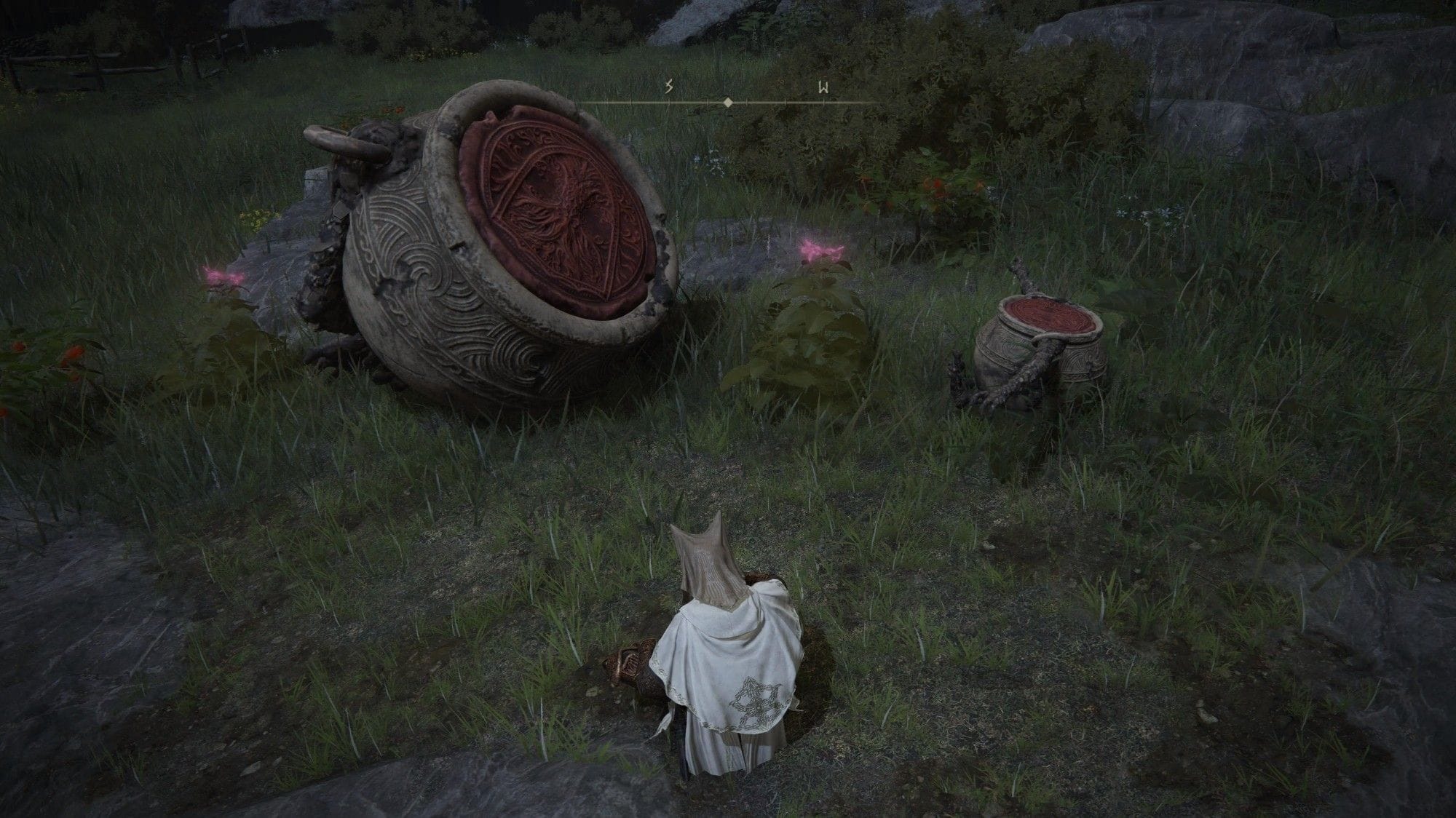
The Road Less Travelled
From Software narratives often revolve around destiny and purpose. While Elden Ring has many different possible endings, all of them are centralized on the Tarnished and their destiny to become some variation of Elden Lord.
Jarburg is different. It feels like a secret tucked within a secret, a place that, if left undisturbed and undiscovered, will make no material difference on your adventure through the Lands Between. It's a secret in a video game replete with hidden answers to unknown questions, but its purpose as a bastion for defenseless creatures feels unfamiliar when so many From Software offerings are riddled with pain, cruelty, and death. But perhaps that is its exact function, to be a lovely home.
"Coz...Tell me a story... About the big, wide world..."
The Jar-Bairn
Upon entering Jarburg (as of one of the post-release patches), you might encounter a little fellow called the Jar-Bairn. One of the Living Jars, the word "bairn" is Scottish English for child. This entity is the nephew of Alexander the Warrior Jar, the great hero who helps you conquer Starscourge Radahn. The Jar-Bairn dreams of a similarly heroic life, one in which they might inherit the power and deeds of their fearsome uncle.
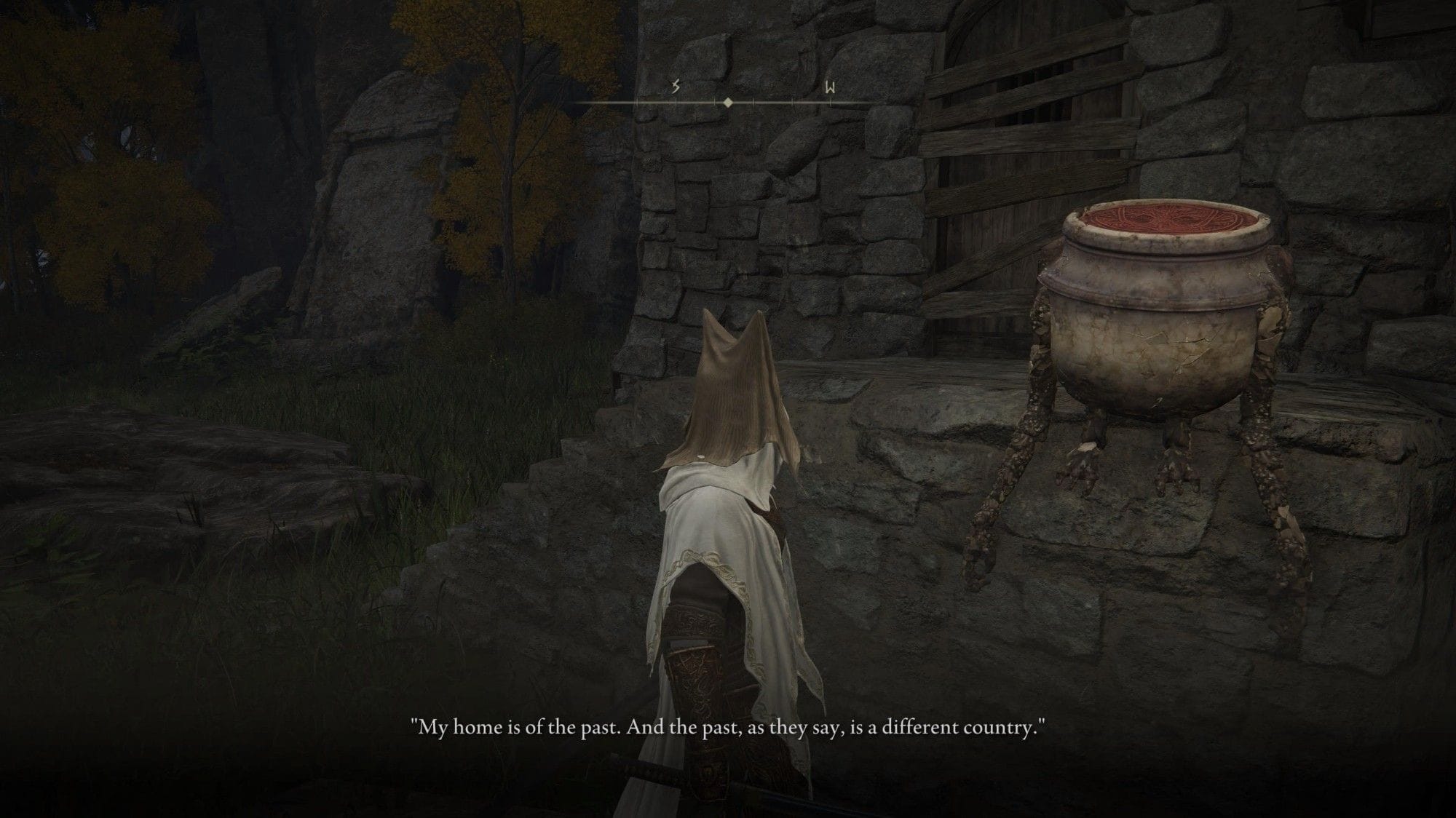
The Living Jars are a curious race, made more absurd by the bevy of curiosities that abound within Elden Ring's marvelous world. While mostly silent, Living Jars are compelled by an ancient directive in which they take the bodies of fallen warriors within themselves to grow stronger. Like many of Elden Ring's references to Norse mythology, the Living Jars feel particularly clever: the einherjar, or "those who fight alone" are a race of valiant dead returned to life by Odin's Valkyries, to someday aid in Ragnarök. The einherjar eat their fill and grow stronger as they anticipate the day they will be summoned into battle once more.
From Software regularly employs the use of creatures that border on cute, frightening, and absurd. Whether the Living Jars are individual sentients or simply the dregs of whatever they consume is unclear. It's Jarburg that defines them further, showing that even entities created entirely for violence can find a beautiful place in which to tend and flourish.
Paradise Lost
In Hayao Miyazaki's 1986 masterpiece Castle in the Sky, a variety of characters are in desperate pursuit of an ancient flying kingdom that might have once been a great weapon. At one point in the film, the character Sheeta inadvertently reanimates a dormant robot who goes on a destructive rampage, protecting Sheeta and destroying the enemy fortress. The robot, cold and incomplete, is a terrifying weapon that sows chaos and disorder by utilizing a frightening technology that none of the on-screen characters can fathom.
Later in the film, when the characters finally land on Laputa, they discover an idyllic landscape that's being tended to by a functioning robot. With no visible threat to itself, the robot is gilded in moss and lichen and offers Pazu and Sheeta a single flower as a gesture of kindness and goodwill.
Back in Elden Ring, after the battle against Starscourge Radahn, we find Alexander shuffling about in the sands, stuffing his body with the dead. Whether he gains literal power from these decrepit remains or if it's a spiritual and emboldening action is unclear, but our friendly ceramic hero gleefully participates in this ritual, readying himself for the battles ahead. The Living Jars believe that consuming the bodies of the dead doesn't just offer ritualistic powers, but also a piece of the consciousness left behind.
"Though the jars are brought to life by human flesh and blood, they are all rather kindly folk. Perhaps they were made to be better than their innards.
Their fragments command a high price due to the magical power locked within. This leaves the living jars unfortunate targets for poachers."
Soldjars of Fortune Ashes description
Whether the Living Jars begin with their own personalities or simply gain sentience based on an amalgamation of the spirits of those they consume doesn't matter. Whatever force created them only intended them to be automatons of war, tools used to conquer battlefields and clean up the remains of the valiant deceased. Jarburg, in opposition, is a brilliant choice. It's a place where Living Jars can go when they do not wish to participate in the barbarism of their raison d'etre.
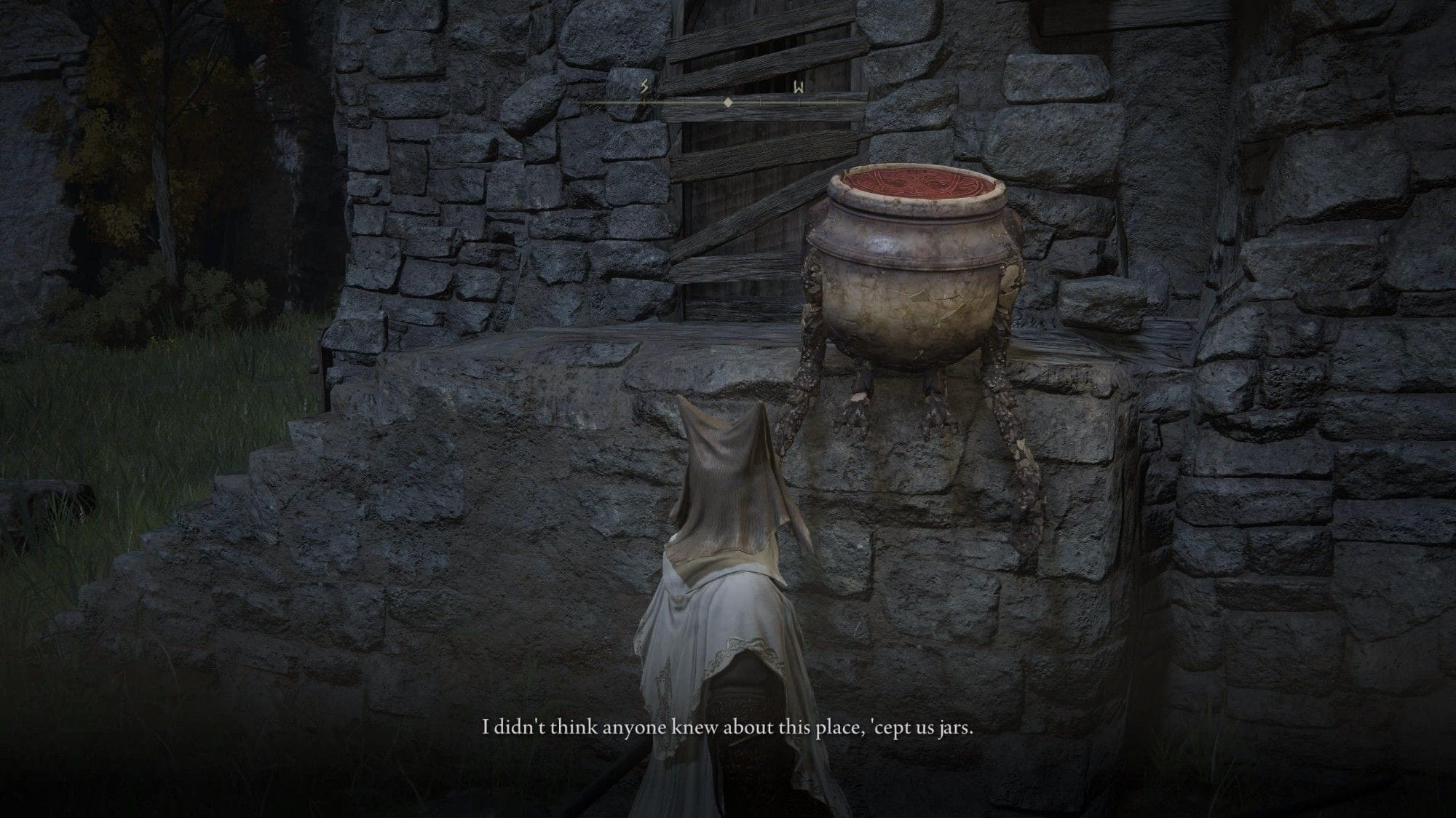
Another Life Is Possible
When the Jar-Bairn meets the player in Jarburg, he's afraid that they might be a poacher, come to steal the insides of all those who have taken solace in this sanctuary of respite. Jarburg, tucked into the cliffside, is not far from a nearby cemetery (though few locations in Elden Ring are very far from a cemetery). Whether this location was chosen based on preference or convenience, there is something to be said for the hamlet lying beneath the shadow of the dead. Perhaps it's a reminder for all the little Living Jar folk about where they came from, and where they are destined to go.
"Uncle Alexander said he won't be back again. "My home is of the past. And the past, as they say, is a different country." I suppose that's part of being a warrior, isn't it."
The Jar-Bairn
Resisting fate and staking out your claim on destiny and purpose is one of the founding principles of sentient beings. In the movie The Iron Giant, the titular giant must choose between his purpose as a planet-destroying weapon of war or an affable companion. In NieR Automata, several of the robots form a hidden Machine Village where they can live in peace. Resisting violence and finding a new reason to exist is often central to narratives about human-like machines—one of the most infamous stories is that of Pinnochio, whose uncanny and obsessive search for purpose and identity leads him on a route of danger and chaos.
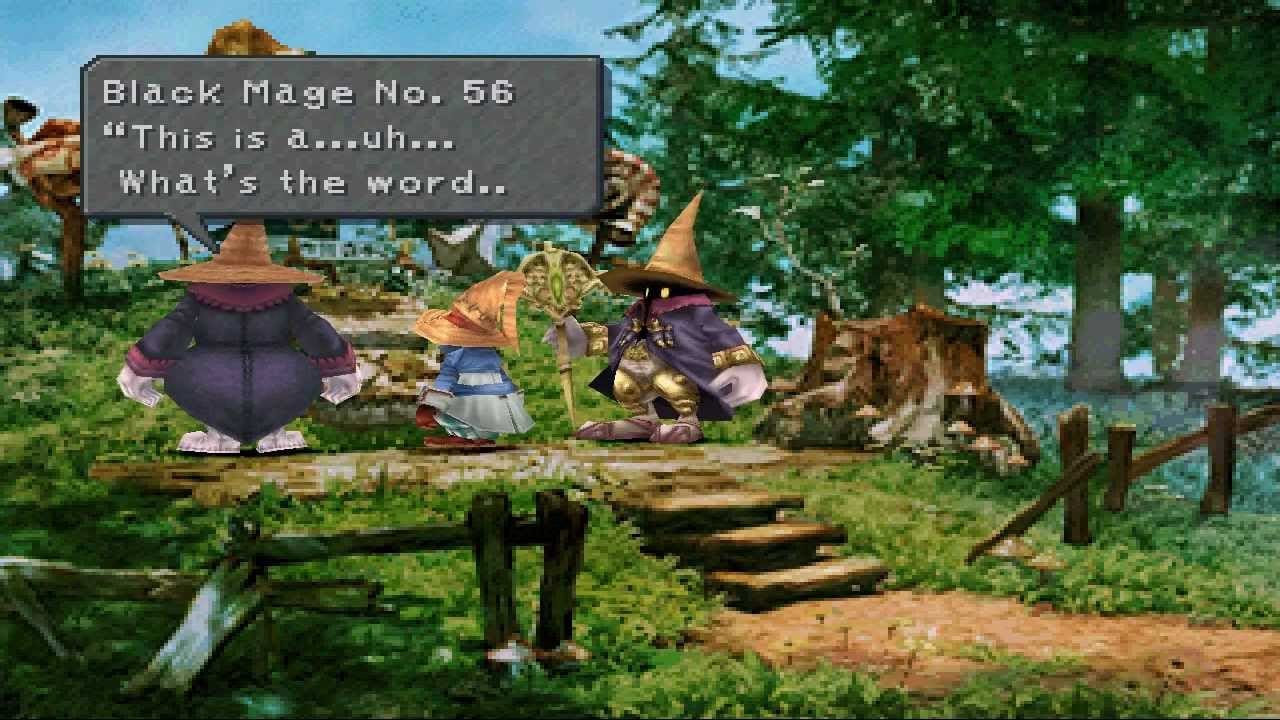
Jarburg's existence reminds me of the Black Mage Village in Final Fantasy IX. Early in the game's narrative, Final Fantasy IX establishes Black Mages as unparalleled killing machines crafted by a vile imperial nation, whose only purpose in life is to be brainless automatons. Roughly halfway through the game, the party stumbles upon a well-hidden bulwark, an entire village of Black Mages that discarded their violent pasts to take up hoe and shovel and pen. This commune of poet-philosophers welcomes the party and conveys upon them a terrible secret: while they were blessed with sudden sentience, they also discovered that someday every one of them will "stop moving".
Knowing their lives are limited, the Black Mages decide to do the only thing they can: they live every day as if it might be the final one.
"But living in the village with everyone fills me with joy. The joy of living with them far outweighs the fear of death. Isn't it the same with you? Traveling with your friends gives your life meaning."
Black Mage No. 288
Tears In The Rain
In Elden Ring, Alexander tells us that it is the destiny of all Living Jars to become great warriors, in hopes they can elevate themselves toward the status of Champion. The Minor Erdtree locations throughout the Lands Between are littered with the bodies of fallen Jars, places that attract fallen heroes. While most of the Living Jars throughout Elden Ring are hostile toward the player, it makes one wonder if their silent aggression is actually due to their desperation for purpose. Should they kill and consume the Tarnished, they might be able to elevate themselves to that of Champion, and move beyond their simple directive of violence.
And then there are the Living Jars who abandon this path completely and find themselves in Jarburg, among the flowers.
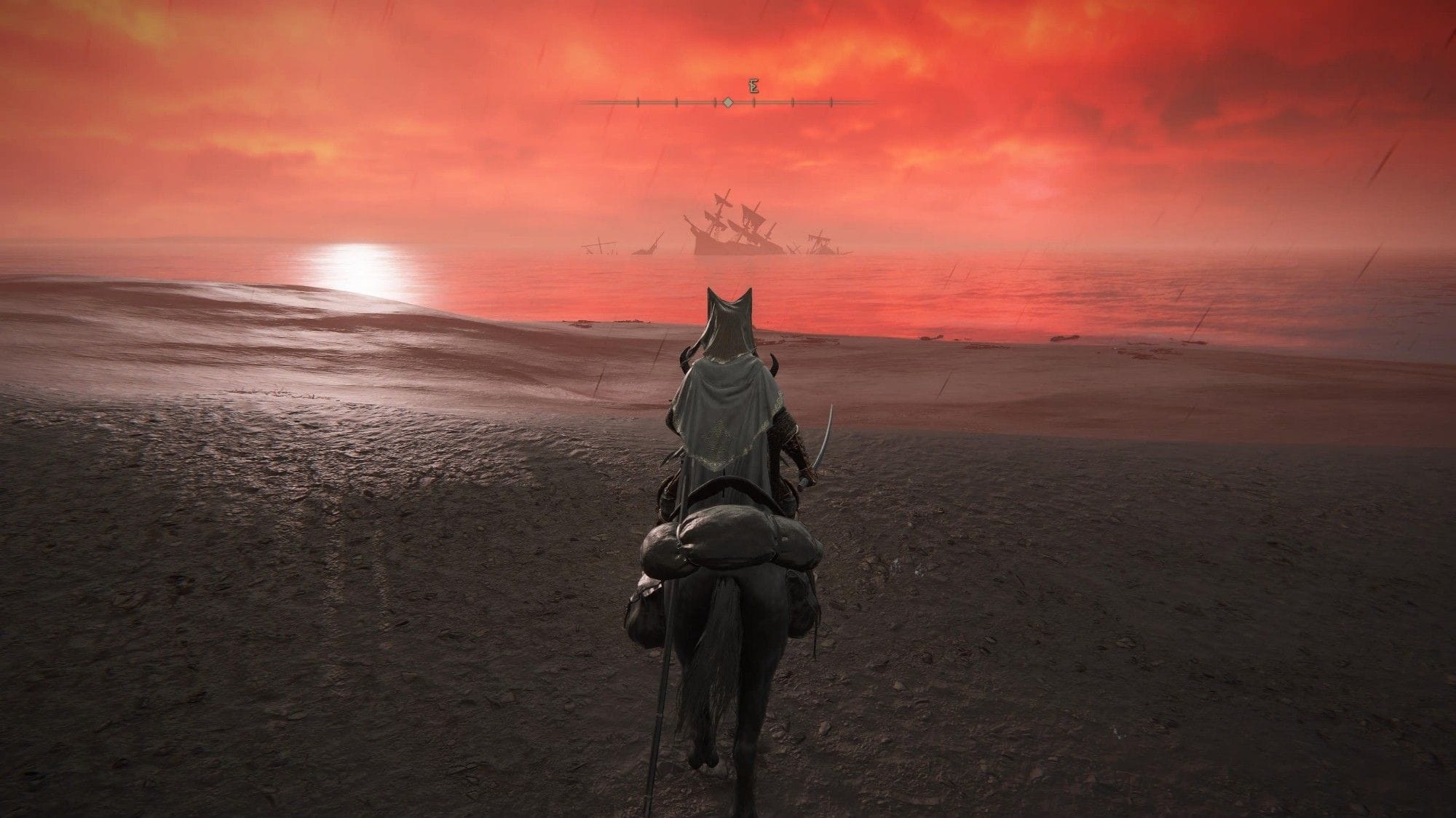
Elden Ring, like many From Software games, is obsessed with eternity. Death is rarely the end in games like Dark Souls and Bloodborne, and in Elden Ring, Those Who Live in Death are reanimated because of the actions carried out in the Night of Black Knives. The Living Jars, then, are unwilling participants in a different sort of eternity. While those they consume no longer live in the way that they had, the Living Jars are bottling the spirits of these glorious dead and returning them to a new purpose. In the same way that dead bodies eventually return to the earth and become part of it, the Living Jars create an unwilling network of consciousness that continues on and on, forever, as long as one uncracked Jar remains.
The dichotomy of peace and war is often at the forefront of JRPG narrative, but themes of life and death persist throughout the whole of our storytelling canon. Every living being deserves to live their life to the fullest; it is either by design or intention that conflicts arise and death continues to sow our landscapes. For the Living Jars, their simple act of peace and tranquillity is in itself a rebellion. It's a rebellion against their makeup, a rebellion against fate.
Like Tolkien's Hobbits living within the Shire, crafting mead and tending to their meager farmlands, it's the rest of the world that has given in to absurdity. As the player walks through Jarburg for the first time they do not see fields of dead bodies or wartorn lands, they see smallfolk toddling among the beauty of flowers and large-bodied pots lazily enjoying unpredictable weather. It's a life that should be easily recognizable, but it feels uncommon, strange, and profound.
After discovering Jarburg, I found it difficult to ever strike one of these creatures again. I simply ran away, content that one of these fellows might find Jarburg's remote outwork.
The village is a beautiful cemetery, a place where heroes found another way to be.
"I did not know the year then—
In which my call would come—
Earlier, by the Dial,
Than the rest have gone."
Comments
Sign in or become a SUPERJUMP member to join the conversation.
